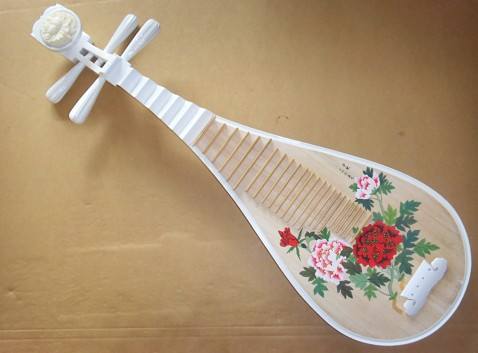What are the pipa techniques
There are many basic fingerings for the pipa. The right hand includes: play, pick, roll, roll finger, slide, lift, pick, play the board, roll board, buckle, cover, divide, shake, sweep, whisk, phoenix nod, hook, wipe and many more. The left hand includes: kneading, chanting, swinging, belting, hitting, pushing, pulling, pressing, bumping, strangling, trembling, betting and so on.

As the most important and basic sound form of the right hand, the sound point represented by playing and picking has the simplest, most complex and richest techniques.
Flicking includes basic technical concepts and variations of right-hand movements. Under different speed conditions, the three technical methods of rotation, flexion and extension, and compounding, as well as various combinations and variants differentiated from them, show their multi-functional strengths in basic techniques and expressive skills. They provide many activities and possibilities for the design and selection of tone points in terms of color, character and shape.
In the musical literature of pipa, strumming is not only the main technical form, but the expressive function, cultural history information and aesthetic information contained in the sound point skills are far greater than the movement itself.
Playing and picking are the art and technique of tone points. The infinite variety of tone points with rich functions can fully demonstrate the player's ability and level to control single notes and handle horizontal single-line phrases. This ability and level are of vital significance to Chinese instrumental players, especially pipa players. In Chinese music, including folk instrumental music, folk vocal music, opera, folk art, etc., the phrases evolve horizontally in the form of a single line, which is a perfect classic technique that has been brought to the extreme. How to deal with the most basic form of sound - sound point, is actually the key to grasp the artistic expression of the mother tongue.
The technical components, classification concepts, action forms and sensory information contained in the play and pick are included. It directly affects the movement level of the overall structure of the right-hand technical system, the technical performance ability and the possibility of its development space. As the first action, beginners usually receive the enlightenment education of pipa playing from playing and picking, and gradually acquire the feeling of the qin, the feeling of strings, and the professional perception of instrumental music performance. As well as the ability to interpret musical compositions with increasing depth, richness, and near-perfection.
Compared with the movements of other right-handed systems, flicking and picking have particularity and complexity in classification. Various picking and notation methods use the same fingering mark, but belong to different classifications in the dynamic functional parts participating in the action. In terms of appearance dynamics, they have obvious differences. At the level of artistic expression and technical training, their respective derived movements have the same and equivalent weight-bearing effects for training and application.
 渝公网安备 50010702504639号
渝公网安备 50010702504639号